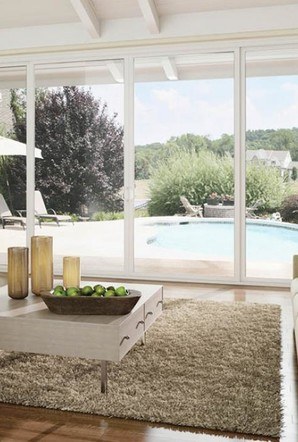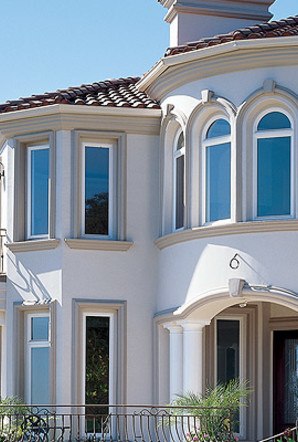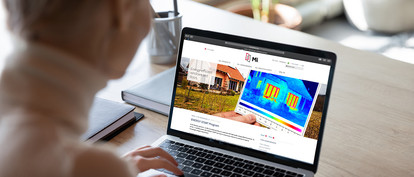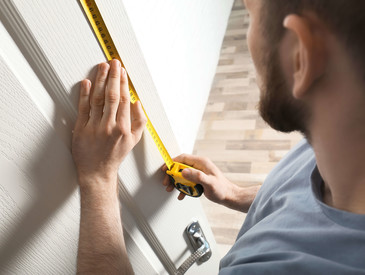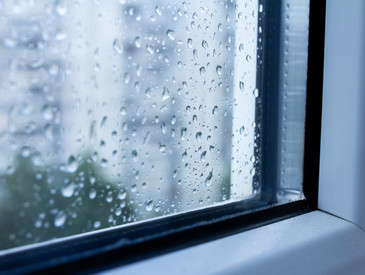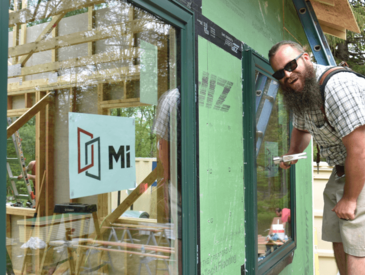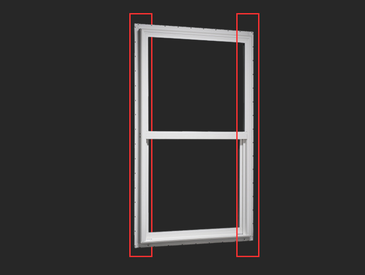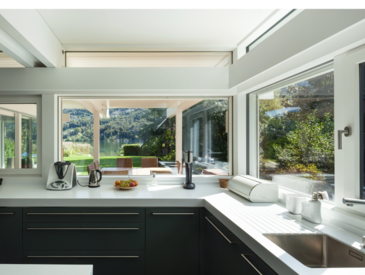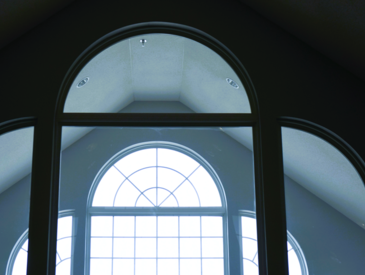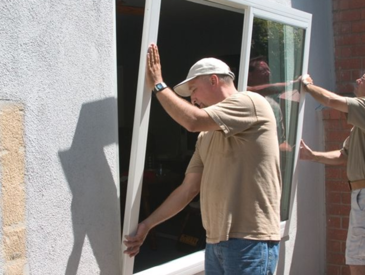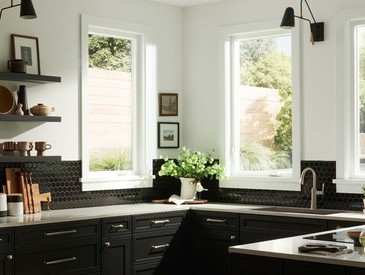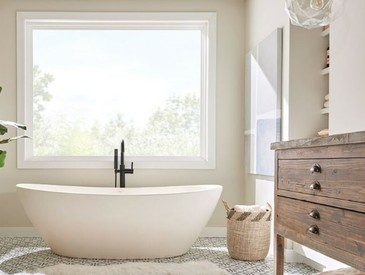If you’re shopping for windows, you’re probably hearing a lot about different energy-efficiency ratings. You might be wondering: Who makes these ratings? And why are these so important? If you want to increase your home’s comfort and help lower your energy bills, you need to learn all about solar heat gain coefficient for windows.
What Is solar heat gain coefficient?
Solar heat gain coefficient (SHGC) measures a window’s ability to control how much of the sun’s heat enters the home. The solar heat gain coefficient range is between zero and one: A rating of zero means that no solar heat passes through the window or door, while a rating of one means that all possible solar heat passes through.
Low SHGC windows are most important in warm climates, where homeowners spend more time and money cooling their homes. In those warmer climates, a lower SHGC is desired to deflect more of the sun’s energy and keep the home cooler.
What Is U-Value?
U-value measures a window’s rate of heat loss, or how much heat your home loses through the window. Like the solar heat gain coefficient, it’s depicted as a number ranging from zero to one. A window or door with a lower U-value will lose less heat to the outdoors through the window, therefore improving energy efficiency.
U-values are most important in cooler climates, where homeowners spend more time and money heating their homes. In those cooler climates, a lower U-value is desired to maintain a warmer interior temperature during the heating season.
What Is visible light transmittance?
Visible light transmittance (VLT) is a third rating that’s related to the solar heat gain coefficient. It measures how much light in the visible spectrum passes through the glass of a window or door. Like SHGC and U-value, VLT is measured as a ratio between zero and one. A rating of zero means that no visible light passes through the glass; these windows are typically heavily tinted. A window with a VLT rating of one allows all visible light in, which would make for an extremely bright room and likely cause fading of furniture and curtains.
Because a lower VLT means less light passes through the window, lower VLT ratings are typically also associated with a better solar heat gain coefficient that is close to 0. Most windows and doors manufactured today allow enough visible light transmittance to keep the home comfortably lit without causing damage to interior household items.
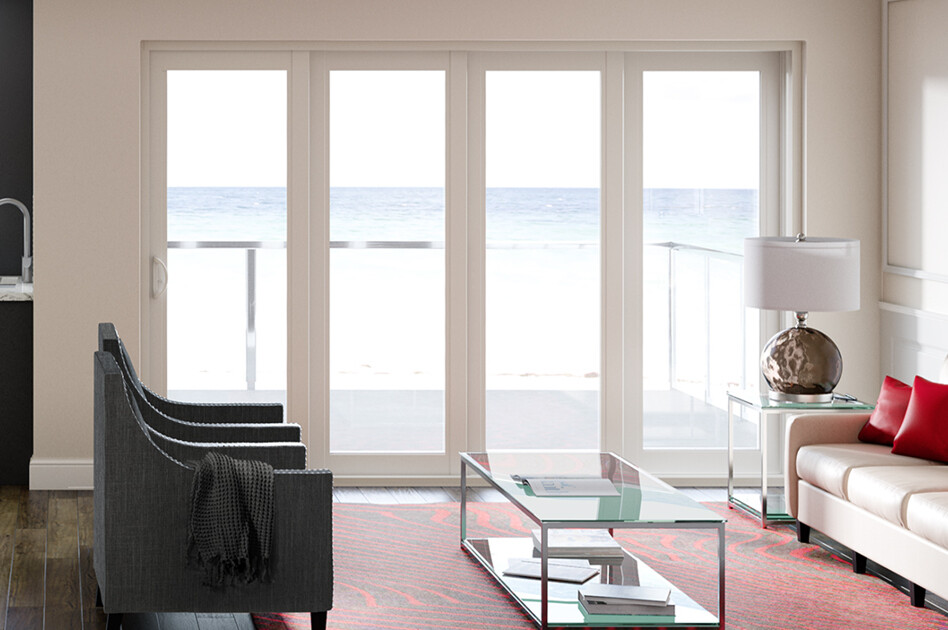
Energy-efficiency rating organizations
So, who comes up with VLT, U-value, and SHGC ratings, anyway? All of these ratings are set and standardized by two programs: the NFRC and ENERGY STAR®.
National Fenestration Rating Council
The National Fenestration Rating Council (NFRC) is a non-profit organization founded in 1989 that develops uniform rating systems used to measure the energy performance of windows and doors. These ratings are standard for all products, which means all windows are compared apples-to-apples, regardless of their construction (vinyl, aluminum, or wood, for example).
The NFRC has been also responsible for the development of a number of new window technologies such as Low-E coatings, low-conductance spacers, and gas-fill glazing enhancements.
ENERGY STAR®
ENERGY STAR is a voluntary program established in 1998 by the Environmental Protection Agency (EPA) that certifies windows according to energy-efficiency standards it has developed. The standards vary by region, but to be recognized as ENERGY STAR certified, a window or door must:
- Be manufactured by an ENERGY STAR partner
- Be independently tested and certified by the NFRC
- Have NFRC ratings that meet strict guidelines set by the U.S. Department of Energy
If a product doesn’t meet these standards, it can’t be sold with the ENERGY STAR label. The program provides manufacturers with incentives to develop the most energy-efficient products possible, which in turn provides money-saving benefits for homeowners.
How to reduce solar heat gain coefficient
Homeowners are catching on to why solar heat gain coefficient for windows matters. But there are a number of other features that can improve the energy performance of a window or door.
Glass Coatings
Low-emissivity, or Low-E, coatings are metallic coatings that help improve a window’s energy performance by reflecting sunlight, thereby helping to maintain the temperature inside a home. Homeowners can also opt for high-performance, or HP, Low-E, which is characterized by additional layers of metallic coatings on multiple glass surfaces, further enhancing the window’s energy performance.
Number of Glass Units
Today, very few windows are manufactured with only a single pane of glass. Most windows are double-paned, which offers a significant boost in energy efficiency compared to single-pane units. For homeowners looking to make noticeable changes in the energy efficiency of their home, some products can be manufactured with three panes of glass. Any glass unit with more than one pane is called an insulated glass unit, or IGU.
Glass Spacers
A spacer’s primary function is to maintain a gap between the panes of glass in a window. Spacers also help prevent condensation, reduce the loss of any insulating gas, and decrease stress put on the glass caused by expansion and contraction.
While aluminum was used in the past, today, warm-edge spacers are becoming more common. These spacers eliminate problems associated with aluminum by using materials that do not conduct heat. The two primary types of warm-edge spacers are composite laminate and thermoset foam. Composite laminate spacers are produced with no metal, which means they are completely non-conductive. The majority of the spacer consists of air, which improves the window’s energy-efficiency, insulating abilities, and condensation resistance.
Thermoset foam spacers are made from organic foam, which enhances the window’s sound dampening capabilities. This foam also allows the spacer to expand and contract with changing air pressure, while always returning to its original shape, which helps reduce stress cracks and seal failure. They also allow less heat flow, which can lead to lower energy costs and reduced condensation.
Another common type of spacer is made of stainless steel. Stainless steel provides strength and durability and has similar benefits to thermoset foam. Stainless steel also improves the retention of insulating gas, improving the window’s energy-efficiency.
Gas-Fill Enhancements
Gas-fill enhancements are an important part of improving a window’s solar heat gain coefficient. Gas fills act as an insulator between the panes of glass in dual- or triple-paned windows. The gas helps keep the temperature of the interior panel closer to that of the home, which helps reduce drafts and cold spots and create a more comfortable interior space.
The most common type of insulating gas is argon, which is denser than air and therefore helps reduce air transfer through a window to improve a home’s energy efficiency. Krypton and xenon are less commonly used gasses that provide varying levels of energy savings.
Reducing solar heat gain coefficient with MI Windows and Doors
Energy performance is one of the most important factors to consider when looking to update your home with new windows or doors. We hope this window ratings guide has helped you understand solar heat gain coefficient, U-value, and visible light transmittance, so you can make an informed decision.
At MI Windows and Doors, we’re committed to providing our customers with high-quality, energy-efficient products. To do this, we proudly partner with ENERGY STAR® and work to continuously improve our products to meet its increasingly stringent requirements. Most MI vinyl products are available as ENERGY STAR®-qualified in all regions, and many require no upgrades to achieve the rating. Aluminum products qualify for ENERGY STAR certification in South, South-Central and North-Central regions.
If you want to learn more about energy-efficient windows, contact a Certified Dealer in your area. They’ll be happy to match you with MI products that meet all of your needs.


















